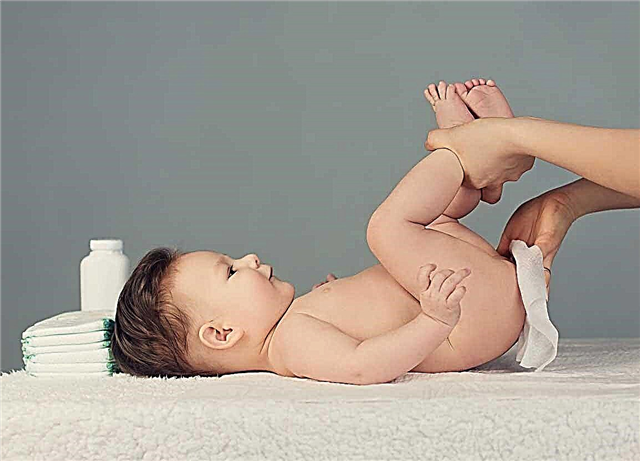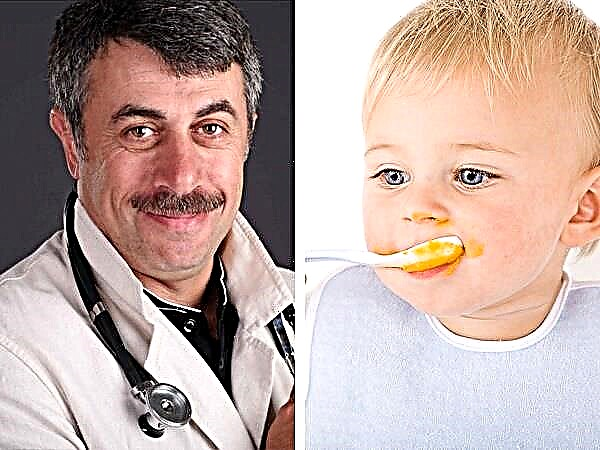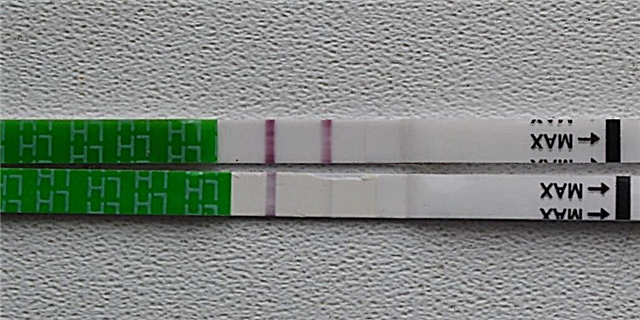Babies often suffer from colds, while fever in a child is a constant sign of illness. But sometimes, in addition to the usual manifestations, the crumbs develop a rash on the body. Such symptoms can indicate a variety of diseases, ranging from completely harmless conditions to serious infectious diseases.
Of great importance in the diagnosis of the disease is the time of the onset of rashes. A rash that appears after a child's temperature rises may mean the development of a viral disease - baby roseola. To understand how to behave correctly for parents in case of rashes on the baby's skin, mothers and fathers should know the main causes of rashes and manifestations of diseases.
About rashes in babies
The appearance of rashes is more typical for children, since the skin of children has its own characteristics. The skin of the crumbs is thinner than that of adults, more delicate and prone to irritation. Various factors can affect the health of the protective cover of the body: air, water, allergens in food and in the environment, medicines taken by a baby, infectious agents.

In addition, the immune system of children is imperfect, unable to perform its function properly. Therefore, infectious diseases with skin manifestations occur, which are characteristic precisely of childhood, excessive sensitivity to certain substances, allergens.
Although there are a lot of rashes, depending on the cause of the appearance of the rash, they are all divided into 2 groups: infectious and non-infectious.
It is necessary to reassure the parents, noting that the combination of symptoms of a rash and a temperature in a child, most often does not carry serious consequences and goes away on its own. Often these manifestations are the result of non-infectious causes. But, if parents find a sharp increase in temperature, a pronounced deterioration in the general condition of the crumbs and a rash, you should immediately contact a specialist. Such symptoms may indicate the development of childhood infections, both viral and bacterial.
The main non-infectious causes of rash and fever in children
Rash from insect bites
Often, babies have small itchy pimples on their bodies - traces of mosquito bites, bedbugs, and some midges. The baby's immunity reacts to the ingress of a foreign substance into the body, causing an itchy rash, a slight increase in temperature.
Rashes are found on open areas of the body and cause discomfort to the baby. The child combes the bite site, thereby extending the process more deeply. A microbial infection can join the damaged skin, causing an inflammatory reaction, worsening the baby's condition. Therefore, it is important to determine the cause of the rash in time and take the necessary measures.

In favor of insect bites, the place of distribution of the rash speaks - the arms, legs and face of the baby. Usually these are single, severely itchy pimples. Upon careful questioning of the mother, the doctor often finds out that the family has recently been in nature without taking appropriate preventive measures.
Toxic substances that insects spray into the blood can increase body temperature, often this is observed with wasps, bees, hornets bites. If the baby is prone to allergies, his body reacts more sharply to foreign substances, causing a pronounced general and local reaction to the bite of any insect.
To help the baby, you need to treat the affected areas with special means - "Fenistil-gel" or "Psilobalm". If the general symptoms are significantly pronounced, it is worth using antiallergic, antipyretic drugs.
Allergic diseases
Although hypersensitivity reactions rarely cause fever in adults, this symptom still occurs in babies. The most common allergic diseases in which an increase in body temperature is possible include:
- acute urticaria.
This ailment is characterized by the appearance of a rash that looks like a burn from nettle grass, hence the disease got its name. Itchy blisters come on suddenly all over the body. Often, urticaria is combined with a fever up to 39 ° C, weakness, and severe discomfort. Sometimes the disease leads to bronchospasm, facial edema and anaphylaxis.

Infant rashes are usually associated with the introduction of new foods into the diet. Citrus fruits, nuts, cow's milk, seafood are dangerous for babies. In children over 2 years of age, urticaria can accompany an infectious disease, helminthic invasion. In such cases, it can be difficult to determine what initially caused the fever; a thorough medical history and examination of the child is required.
Urticaria is a dangerous condition, especially if the ailment is accompanied by edema syndrome. The appearance of swelling on the face, cheeks, eyelids, lips, requires immediate hospitalization of the child in a hospital.
- drug allergy.
With the use of certain drugs, hypersensitivity may develop with an increase in body temperature. Most often, babies react to antibiotics, some anti-inflammatory and cytostatic drugs. This condition is also called "drug fever".
After 3 - 4 days from the start of taking the medicine, the baby's body temperature rises, reaching 39 - 40 ° C, a rash appears on the body. During a detailed examination of the child in a blood test, the doctor notices an increase in the level of eosinophils, and the mother talks about the treatment of the baby. All this testifies to the allergic nature of the disease. The manifestations of the disease disappear when the ill-fated medicine is canceled.
- serum sickness.
It is possible to develop a delayed allergic reaction to the administration of the drug, which in its composition contains proteins of animal origin - vaccine, serum, blood product, hormones. In this case, rashes first appear at the injection site, and after the incubation period, after 7-14 days, urticaria occurs, the body temperature rises to 38-39 ° C.

Serum sickness is not limited to rash and fever. In addition, the disease is accompanied by damage to the joints, cardiovascular, urinary, nervous and other body systems.
- reaction to vaccination.
Fever often occurs as a reaction of the baby's immunity to the vaccine. If the temperature after the vaccination has risen moderately, and the condition of the crumbs is not disturbed, then there is nothing to worry about. Usually, such manifestations persist for 48 hours and disappear without a trace.
With the introduction of the vaccine against measles, rubella and mumps, in addition to fever, rashes often occur, catarrhal manifestations - runny nose, watery eyes, a slight cough. These symptoms appear 4 to 15 days after vaccination and soon disappear on their own. Such symptoms are not related to complications, but are associated with the action of a live vaccine.
Infectious diseases in children, accompanied by a rash and fever
Baby roseola
Although almost every baby has encountered this disease, very few have heard the diagnosis of sudden exanthema, the disease is "disguised" as a drug allergy or other childhood infections.

The cause of the development of the disease is the herpesvirus type 6. The causative agent causes in the child a sharp rise in body temperature up to 39 ° C, runny nose, cough, headache, diarrhea, rashes on the body. Fever persists for 3 days, then rashes appear in the form of bright spots, papules. The rash is found on the face, neck, torso of the crumbs, in addition, the baby's cervical lymph nodes often enlarge, edema around the eyes and red spots on the soft palate appear.
A distinctive feature of this ailment is the appearance of a rash in a baby after a drop in high temperature.
The disease is benign, and the occurrence of a rash indicates the recovery of the crumbs. The skin symptoms disappear after a few days. Since the main symptom of this infection is the onset of a rash after a fever in a child, the disease is often confused with an allergy to a drug.
Unlike a hypersensitivity reaction, a rash with exanthema in a child is not accompanied by itching.
Chicken pox
Chickenpox is an infectious disease, the causative agent of which also belongs to herpes viruses, but unlike sudden exanthema, type 3. The disease is very widespread and highly contagious. The pathogen is transmitted aerogenically and can travel long distances during coughing and sneezing. But you can't get chickenpox through contact persons, household items.

After recovery, the baby develops a stable long-term immunity, although recently there have been more and more cases of repeated episodes of chickenpox.
After the incubation period, the baby develops symptoms of acute respiratory infections, weakness, loss of appetite, fever up to 39 ° C. Sometimes the course of the disease is observed with a slight rise in temperature or without it at all. Then the first rashes appear - red spots that quickly transform into papules, small skin tubercles. Over time, the rash takes the form of vesicles - bubbles filled with fluid that dry out and become crusty.
Rashes with chickenpox are accompanied by severe itching, babies often try to comb the arisen elements. This is absolutely impossible to do, damaged vesicles can become infected with the formation of pustules, and then scars. If the rashes were not susceptible to a secondary bacterial infection, they disappear without a trace after 2 to 3 weeks.
The first elements of the rash more often appear on the scalp, neck, face, but can occur on any part of the body. With chickenpox, you can see the simultaneous presence of different elements of the rash, since the emergence of new elements, "pouring", constantly occurs.
The rash can be found on the scalp, in the mouth, on the conjunctiva, but the skin on the palms and soles remains clean.
Usually, the disease is mild and requires only symptomatic therapy. Parents need to ensure that the baby does not scratch the elements of the rash. The disease is dangerous for pregnant women and babies up to a year. In infants, the disease is more often severe and threatens with the development of complications, the most formidable of which is damage to the brain and its membranes.
Scarlet fever
This disease is caused by a bacterium - group A streptococcus and proceeds with severe intoxication, damage to the oropharynx and a characteristic rash. The appearance of unpleasant symptoms is always preceded by contact with a patient with scarlet fever. After 1 to 10 days after meeting with the causative agent of the infection, the baby develops signs of the disease - a sharp rise in temperature, weakness, vomiting.
The child complains of a sore throat, and when examining the oral cavity, the doctor notices the characteristic signs of scarlet fever - sore throat, significant hyperemia of the tonsils, pharynx, palate, the so-called "flaming throat", "raspberry tongue".

A rash with scarlet fever occurs on the first or second day from the onset of the disease and looks like small dots against the background of general redness of the skin. Rashes are abundantly located in places of skin folds, the lateral surface of the body.
Although the rash covers almost the entire body, there are no elements of the rash in the nasolabial triangle, there is a pallor of the skin.
After 3 - 5 days from the start of treatment, the condition of the crumbs improves. The rash begins to fade, leaving behind areas of scaling, which are most pronounced on the palms and feet of the child.
Scarlet fever is a dangerous bacterial infection and should be treated with antibiotics under medical supervision.
Measles
The causative agent of this disease is the measles virus, which causes catarrhal manifestations in the child, fever and a typical rash. After an incubation period lasting up to 2 weeks, body temperature rises sharply and signs of intoxication appear. In the first days of the disease, the baby has a dry cough, runny nose, eyelid edema, and conjunctivitis.
A characteristic symptom of measles is the development of photophobia. It is difficult for a kid to be in a bright room, his eyes are watering, the baby begins to squint, cry.
After a catarrhal period, which lasts up to a week, elements of a rash appear on the child's skin. The first rash can be found on the head and face of the crumbs, the upper body. The next day, the rash spreads to the trunk and shoulders, and then to the lower limbs.

Rashes with this infection have the appearance of medium and large (10 - 20 mm) bright spots and papules that rise above the surface of the skin and tend to merge.
One of the diagnostic signs of measles is the appearance of Filatov-Koplik-Velsky spots on the mucous membrane of the cheeks. They are whitish areas surrounded by a corolla of hyperemia, redness of the mucous membrane.
Recovery occurs within 7 - 10 days from the onset of the disease, and at the site of the rash there are areas of pigmentation and peeling, which eventually disappear completely.
Measles is dangerous by the development of serious complications - inflammation of the brain, loss of hearing and vision, therefore, the diagnosis and treatment of the disease should be carried out by a doctor.
Rubella
This viral infection is accompanied by a high body temperature, the development of a characteristic rash, moderate intoxication and damage to the lymph nodes.
The disease begins with fever, mild catarrhal manifestations and general symptoms. Often, children have a runny nose, lacrimation, sore throat, enlarged occipital and cervical lymph nodes.

A few days after the onset of the disease, itching and rashes occur. A small, patchy rash appears all over the body at the same time, except for the thin skin of the palms and soles. During a rash, body temperature increases slightly or remains within normal limits. After 4 - 5 days, skin manifestations disappear without leaving a trace.
Although rubella usually does not cause serious complications, the infection is extremely dangerous for pregnant women. The virus is capable of infecting the fetus, causing miscarriages and malformations in the child.
Meningococcal infection
This disease is rightfully considered the most dangerous infection for a child. Bacterial disease is rare, but in children under 1 year old, the disease often leads to serious complications - inflammation of the brain and its membranes, sepsis, and blood poisoning. According to statistics, up to 20% of sick infants worldwide die.

A sharp appearance in the crumbs of fever and a stellate rash, which does not change from touching, is a reason to immediately call an ambulance. The help provided in time can save the life of the baby.
Conclusions
Clinical manifestations such as fever and rashes can indicate a wide variety of conditions. Some of them are completely safe and go away on their own, even without treatment, while others entail serious consequences and complications. Understanding the variety of clinical manifestations of childhood illnesses and determining the correct treatment is not an easy task.
Mom can help the doctor in determining the cause of the appearance of these symptoms, because only parents know everything about their babies and can describe in detail the diet and regimen of the toddler, suspect contact with the source of infection.It is important for moms and dads to know what dangerous situations can be disguised as habitual symptoms, and when you need to immediately consult a specialist in order to keep your baby healthy.



